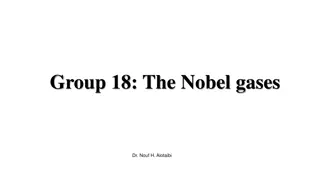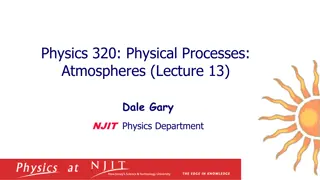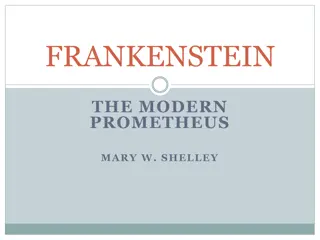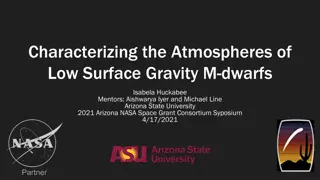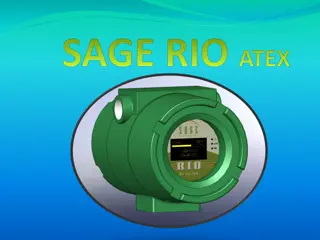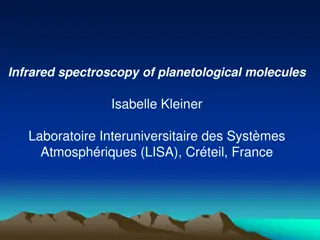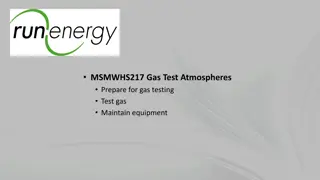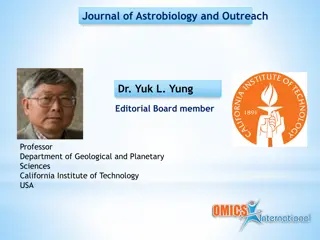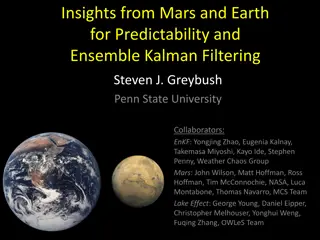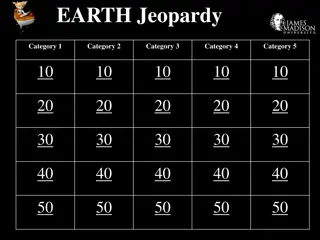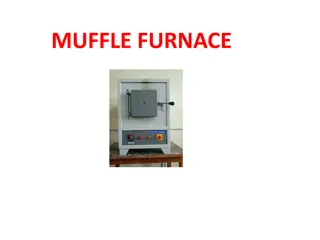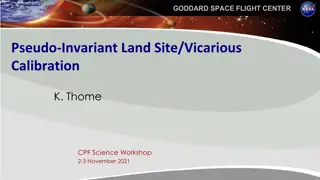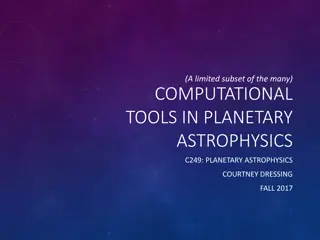Exploring Exoplanetary Atmospheres with IGRINS at Seoul National University
This study delves into the analysis of exoplanetary atmospheres using IGRINS at Seoul National University. Through detailed observations and analysis, the study aims to uncover new molecular features and properties of these atmospheres. Instruments from previous studies such as NICMOS, CRIRES, OSIRIS, and IGRINS are utilized for high-resolution wide-wavelength coverage. Results from observations on planets like Tau Boo and WASP-3 provide valuable insights into non-transit stars and radial velocities. Detailed line spectra from HITRAN 2012 shed light on the molecular composition of exoplanetary atmospheres.
Download Presentation

Please find below an Image/Link to download the presentation.
The content on the website is provided AS IS for your information and personal use only. It may not be sold, licensed, or shared on other websites without obtaining consent from the author. Download presentation by click this link. If you encounter any issues during the download, it is possible that the publisher has removed the file from their server.
E N D
Presentation Transcript
The Study of Exoplanetary Atmosphere with IGRINS Keun-Hong Park Seoul National University
Introduction Method Observation Analysis Result
1. Formation of the Planetary System 2. Environment of Exoplanet 3. Extraterrestrial Life Why Exoplanetary Atmosphere?
Instruments of the previous studies NICMOS (HST) CRIRES (VLT) OSIRIS (KECK) IGRINS (McDonald) H & K band (1.49-2.46 ) at once : Wide wavelength coverage R ~ 40,000 : High Resolution The Goal of this study Finding of new molecular features The properties of exoplanetary atmospheres
Absorption line in Primary Eclipse Thermal emission in Secondary Eclipse
Month/Year Month/Year Nights Nights Observation Result Observation Result 2014 T3 09/2014 3 Cloudy 2015 T1 03/2015 2 Cloudy 2015 T2 04 05 / 2015 Apr. 29 Tau Boo May. 1 WASP3 3
Tau Boo b Non-Transit Star F6IV H ~ 3.6 Rplanet/Rstar = 0.08 Observed on Apr. 29 Clear In Transit (?) : 120sec 64 , S/N ~ 1200 at 1.6 Out of Transit (?) : 120sec 64 , S/N ~ 1100 at 1.6 WASP-3 b F7V H ~ 9.4 Rplanet/Rstar = 0.11 Observed on May 1 Clear -> Cloudy In Transit : 240sec 14 , S/N ~ 120 at 1.6 Out of Transit : 240sec 22 , S/N ~ 220 at 1.6
Line HITRAN 2012 Shift of the lines Tau Boo : Radial Velocity from SIMBAD WASP-3 : Calculation from Mg I line (1710.86 nm) 1.475 m 1.816 m Long Wavelength 23 22 21 20 19 18 NH3 17 16 15 14 13 12 11 10 9 8 7 6 5 4 3 2 1 CH4 CO OH CO2 HCl H2O N2O H2S C2H2 C2H2 HI
Stellar - planet Stellar planet - atmosphere (??? ????)????????? > (??? ????)???? stellar stellar
Pixels of the lines Pixels of the continuum < 0.01 nm from the molecular lines > 0.05 nm from the molecular lines Away from telluric & other contamination. Away from telluric & other contamination. K-S Test Probability that two groups are same Low Probability : Differences between lines & Continuum
K-S test with 11 molecular in the spectra of two target stars. Expected Result Tau Boo (non-Transit) : All of the probabilities are high . WASP-3 (Transit) : Some of the probabilities are low. WASP-3 Couldn t find any evidence of the atmosphere
Tau Boo CH4, NH3, H2S shows the low probability. ???? ? = 4.3 10 4% ? = 2.1 10 3% ? = 2.5 10 15%





